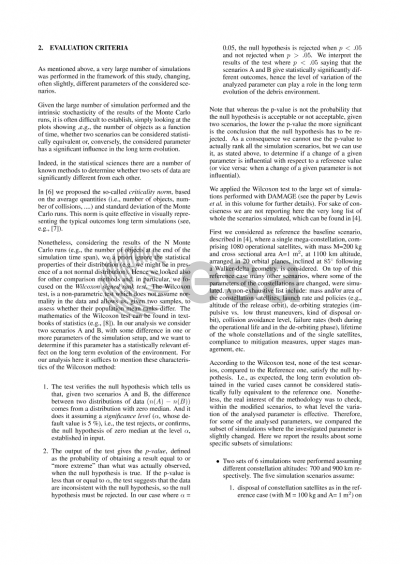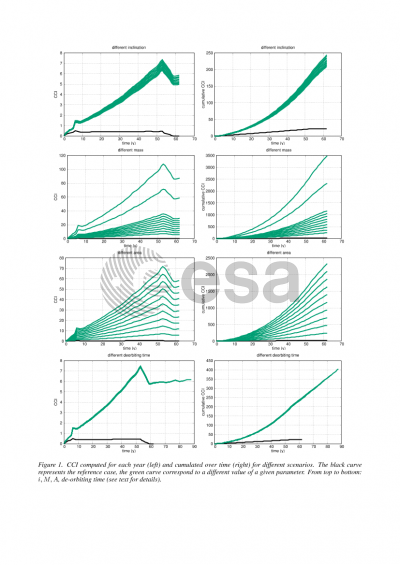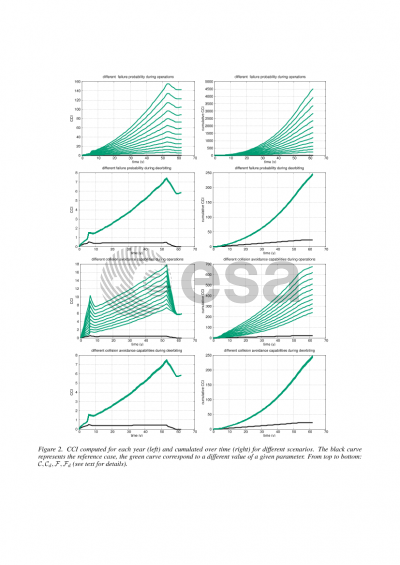Document details

Abstract
In the next decades a number of large satellites constellations
are expected to be launched in Low Earth Orbit.
The huge number of satellites involved in these constellations
poses new challenges to the space debris community at large.
As currently envisaged, these large ensembles of satellites will mainly fly in the already crowded LEO region and the proper management of the launch and disposal traffic will be essential to limit the impact of these space structures on the future evolution of the space environment.
A large number of complex long term evolution simulations were performed in the framework of an ESA-ESOC Contract, to explore and highlight the main parameters driving the future evolution of the environment and to define the best management practices, able to minimize the debris production in the future.
The preliminary results of this study were presented in [1].
Building on the index described in [3] and [2], in this paper we aim at defining a metric and a subsequent index able to quantify the environmental impact of the mega constellations.
The index takes into account the physical and orbital characteristics of the constellation satellites, along with the mitigation practices adopted for each constellation.
Based on the expected collision risk and the capability of
avoiding impacts, the operational and non-operational satellites and
the related upper stages, present in each constellation, enter the index computation with different relative weights to properly account for the global constellation effects on the environment.
An averaged, time evolving, index computed on altitude shells can give quantitative and visually effective indication of the effectiveness of the mitigation practices applied by a constellation operator.
The index, along with other metrics described in [2] also allow easier comparison between different simulation scenarios.
The metrics and the index are applied to the results of a sub-sample of the long term simulations produced in the Contract, showing the relative importance of different design parameters and allowing a better ranking of possible mitigation measures.
[1] Bastida Virgili B., Krag H., Lewis H., Radtke J., Rossi A., (2016),
Mega-constellations, small satellites and their impact on the space debris environment, Paper IAC-16,A6,2,4,x34551, 67th International Astronautical Congress (IAC)}, Guadalajara, Mexico, 26-30 September 2016.
[2] Bombardelli C., Alessi E.M., Rossi A., G.B. Valsecchi G.B., (2016),
Environmental Impact of Space Debris Repositioning,
IAC-16,A6,IP,24,x34589, 67th International Astronautical Congress (IAC), Guadalajara, Mexico, 26-30 September 2016.
[3] Rossi A., G.B. Valsecchi G.B., Alessi E.M., (2015), The Criticality of Spacecraft Index, Advances in Space Research, 56, 449–460.
Preview












